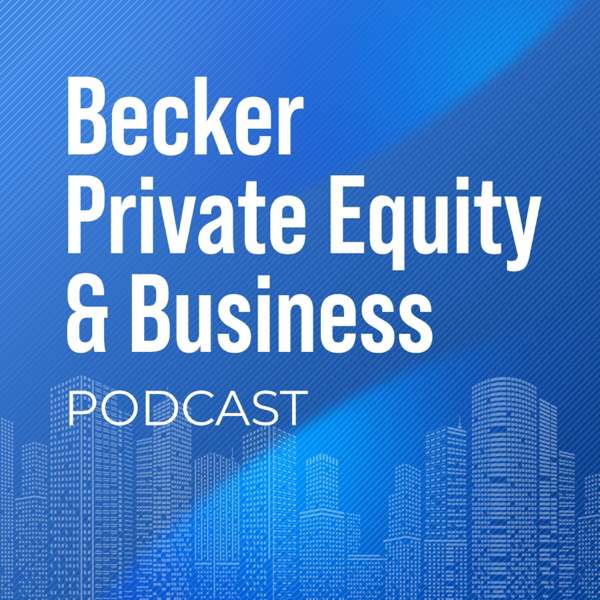In this episode of the CEDIA Podcast, host Walt Zerbe, senior director of technology and standards, explores the latest advancements in video technology with guest Michael Heiss, also known as "Captain Video." They discuss key topics from CES, including HDMI 2.2 and the Lip Latency Indication Protocol (LIP). Michael explains the significant improvements in HDMI 2.2, such as increased bandwidth for higher resolutions and frame rates. They also delve into AI's role in enhancing picture quality and the importance of understanding new technologies. The episode emphasizes continuous learning and staying informed about industry trends.
Timestamps by PodSqueezeIntroduction to the Podcast (00:00:01)
Lip Latency Indication Protocol Overview (00:00:07) An explanation of the Lift Latency Indication Protocol and its purpose in reducing sync errors.
Introduction of Hosts (00:00:57) Walt Kirby introduces himself and guest Michael Heiss, highlighting their excitement about CES.
Reflections on CES (00:01:18) Discussion of the overwhelming amount of information and advancements in video technology at CES.
Consumer Insights on Video Technology (00:02:16) Michael shares insights on consumer interest in new video technology and potential purchasing recommendations.
HDMI 2.2 Announcement (00:03:04) Discussion begins on HDMI 2.2, its improvements over HDMI 2.1, and implications for video transport.
Technical Specifications of HDMI 2.2 (00:03:36) Detailed comparison of HDMI 2.2's speed and capabilities versus previous standards and DisplayPort.
Market Impact of HDMI 2.2 (00:05:30) Exploration of HDMI 2.2's relevance in consumer markets and its potential applications in various industries.
Challenges in HDMI 2.2 Adoption (00:06:06) Discussion on the timeline and challenges of implementing HDMI 2.2 technology in products.
Future of Video Technology (00:08:24) Considerations for future-proofing installations with HDMI 2.2 and the importance of fiber optics.
Introduction to Lift Latency Indication Protocol (00:09:35) A deeper dive into the Lift Latency Indication Protocol and its role in video formatting.
Importance of Sync in Video Processing (00:11:12) Discussion of lip sync issues and the complexities of latency in video and audio processing.
Complications of Latency Perception (00:13:05) Insights on how latency affects viewer experience, particularly in music and video synchronization.
Humorous Take on Lip Sync (00:14:11) A lighthearted exchange about the naming of the Lift Latency Indication Protocol and its acronym.
AI and Lip Sync Issues (00:15:08) Discussion on the potential for metadata-based lip sync solutions in video technology.
AI Applications at CES (00:16:35) Insights into the emergence of AI applications showcased at CES, particularly by LG and Samsung.
AI in Video Quality (00:18:40) Exploration of AI's role in enhancing video quality through background adjustments.
Predictive AI and Daily Life (00:19:45) Discussion on the implications of predictive AI in everyday tasks and its potential downsides.
AI Dependency and Privacy (00:22:46) Concerns about AI dependency, especially during power outages and its implications for privacy.
Samsung Galaxy Phone Controversy (00:24:10) Controversy surrounding Samsung's moon photography feature and its implications for AI in consumer devices.
Leading TV Brands at CES (00:25:39) Overview of leading TV brands showcased at CES, including LG, Samsung, Hisense, and TCL.
AI Engines in TV Brands (00:27:54) Comparison of AI engines used by major TV brands and their implications for functionality.
Sensors and AI Functionality (00:29:16) Discussion on the importance of sensors and microphones in smart TVs for AI functionality.
Introduction to TV Technology Trends (00:30:29) Discussion on the shift in TV manufacturing and the rise of connected TV systems.
Roku's Versatility in TV Market (00:31:27) Roku's functionality as a universal platform for various TV brands is highlighted.
Operating Systems in TVs (00:31:45) Exploration of different operating systems like webOS, Tizen, and Roku in modern TVs.
Consumer Awareness of TV Apps (00:33:03) Importance of understanding app availability on connected TVs for consumers.
TiVo's Marketing Strategy (00:34:21) TiVo's new approach to marketing its operating system through partnerships with TV brands.
Sharp's Return to the US Market (00:35:02) Discussion on Sharp's comeback in the TV market with a focus on its partnership with TiVo.
Trends in TV Sizes (00:37:40) Analysis of the increasing size of TVs and the emerging market preferences.
Direct View LEDs and Market Dynamics (00:39:25) Insight into the competition and advancements in direct view LED technology at CES.
Challenges of Large TV Installations (00:42:47) Addressing the logistical challenges of installing large TVs in homes.
Brightness Improvements in OLEDs (00:44:11) Overview of advancements in OLED technology and brightness enhancements from LG and Panasonic.
Panasonic's OLED Innovations (00:47:03) Panasonic introduces a thermal cooling process for their OLED panels, performing well in high ambient light.
Hisense's RGB Mini LED Announcement (00:48:01) Hisense surprises with RGB mini LEDs, enhancing brightness and contrast without traditional color filters.
Hisense and TCL Brand Evolution (00:49:10) Discussion on Hisense and TCL's rise to first-tier brands, emphasizing their technological advancements.
Trends in Display Technology (00:50:30) Exploration of non-reflective displays and advancements in gaming-focused frame rates.
Samsung's Discrete RGB Micro LED (00:53:00) Samsung reveals a discrete RGB micro LED backlit set, promising enhanced brightness and contrast.
Upcoming Display Technologies at Expo (00:54:01) Anticipation of new display technologies set to debut at the upcoming Expo.
AI and Home Control Integration (00:55:16) Samsung promotes smart TV features that integrate AI for seamless home control.
HDR10+ and Content Compatibility (00:57:46) HDR10+ press conference highlights its integration with Amazon Prime and other streaming services.
Next Gen TV Developments (00:59:43) Next Gen TV advancements discussed, including cheaper dongles and the new zapper box for ATSC 3.0.
Introduction to Marketing Strategies (01:01:58) Discussion on the importance of marketing in the tech industry and venue changes at CES.
TV Innovations with Suction Cups (01:02:28) Overview of a TV with suction cups for mounting, highlighting its features and market presence.
Trends in Monitor Sizes (01:03:40) Exploration of the trend towards larger, curved monitors for home and office use.
Advancements in Audio Technology (01:05:30) Discussion on new audio technologies, including hearing aids and immersive audio experiences.
Hearing Aid Innovations (01:06:54) Introduction of a new over-the-counter hearing aid with AI language translation features.
Samsung's Eclipse Technology (01:08:16) Overview of Samsung's immersive audio technology and its implications for soundbars and TVs.
Gyro-Sensing Soundbars (01:10:12) Description of a soundbar that adjusts audio output based on its mounting position.
Audio Q's Dolby Atmos Decoder (01:12:04) Introduction of a product combining Dolby Atmos decoding with power line communication.
Final Thoughts on Technology (01:13:31) Discussion on the importance of matching technology with client needs and standards in education.
Wrap-Up and Future Events (01:14:45) Conclusion of the podcast and mention of upcoming events in Barcelona.
Introduction to Press Releases (01:16:21) Discussion on the volume of press releases and their significance in staying informed about industry developments.
Acronyms and Abbreviations Course (01:17:40) Overview of a course aimed at clarifying common acronyms used in the video technology industry.
Event Dates Announcement (01:17:57) Mention of the upcoming event dates, February 4th to 6th, and the importance of continuous learning.
Closing Remarks and Philosophy (01:18:19) Reflection on the importance of asking questions and keeping an open mind in discussions and learning.
Final Thank You (01:18:54) Gratitude expressed to listeners, signaling the end of the podcast episode.

 Our TOPPODCAST Picks
Our TOPPODCAST Picks  Stay Connected
Stay Connected







